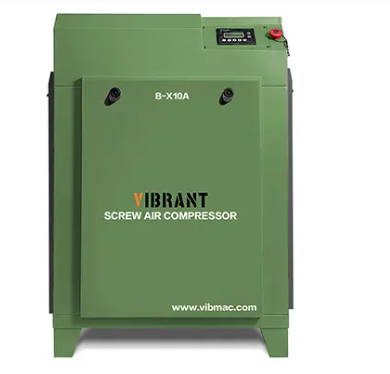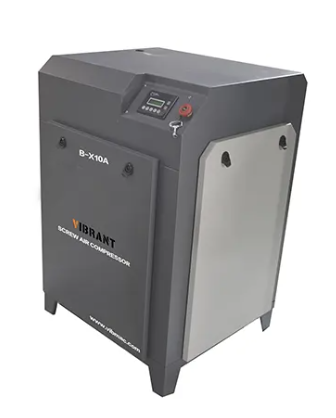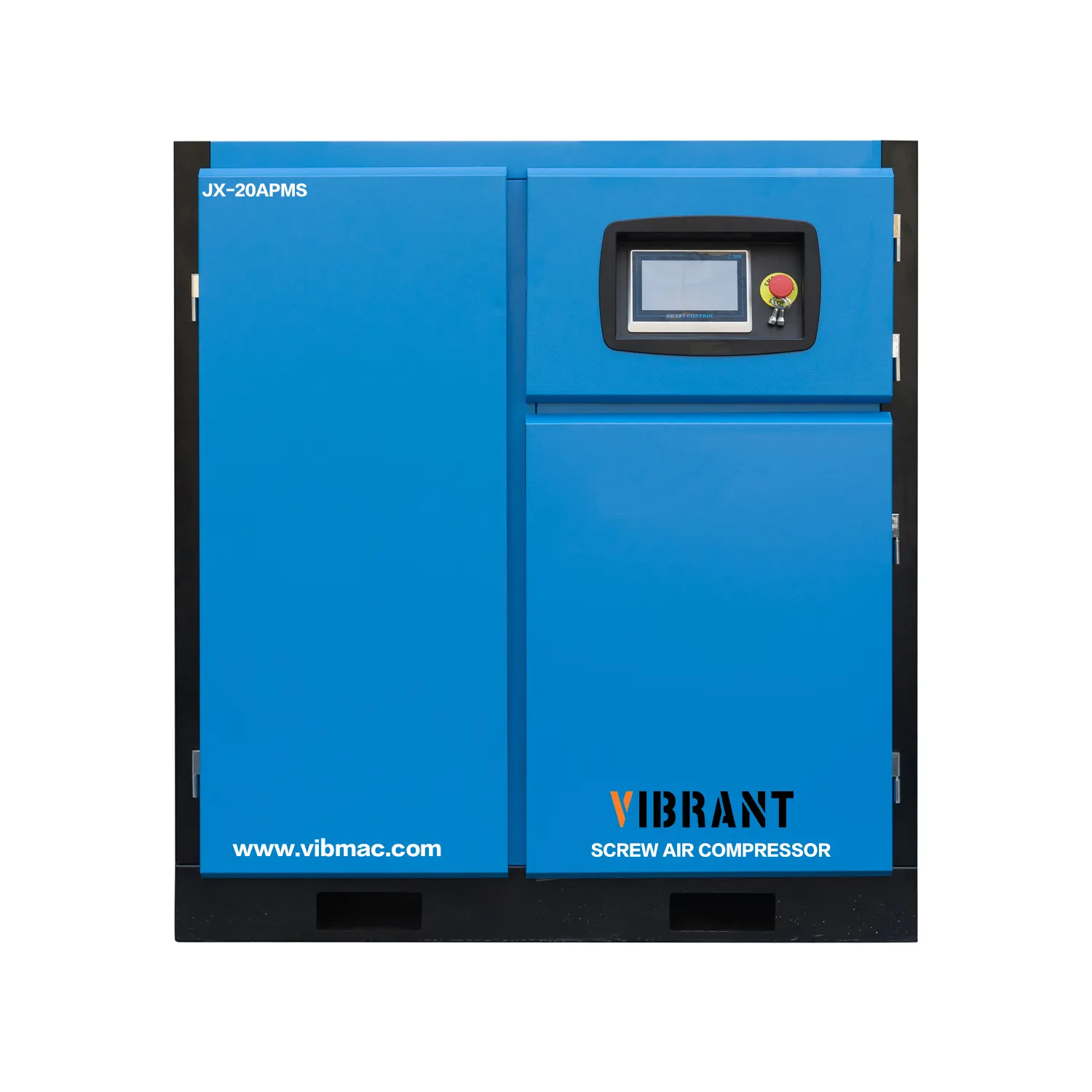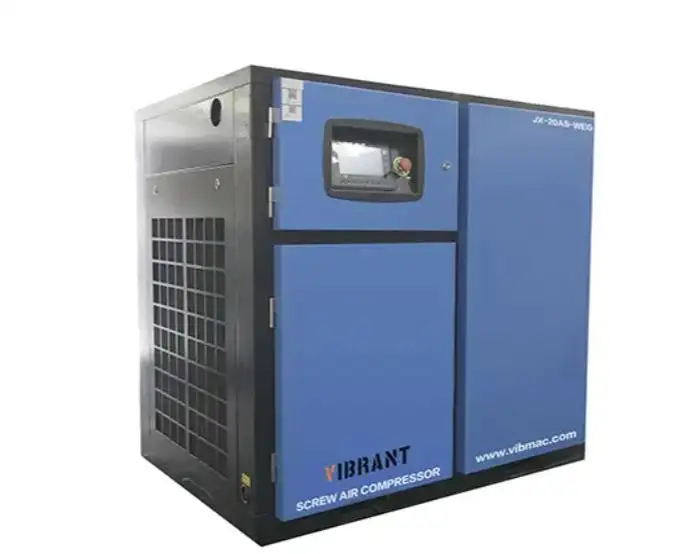A Complete Guide to Reliable Air Power
In today's fast-paced world, efficiency is no longer a luxury; it's the bedrock of every successful plant. Because of this, Industrial Belt Driven Compressors for Factories have become a mainstay on nearly every factory floor. Whether you run a one-person workshop or oversee a sprawling production line, dependable compressed air can be the thin line between profit and costly downtime.
From automotive assembly halls to quiet textile mills, these machines keep pneumatic hand tools moving and automated robots on task. 0Well also shares practical tips to guide you toward the model that best fits your facility.
What Is an Industrial Belt Driven Compressor?
An industrial belt-driven compressor links the electric motor to the pump with a durable belt-and-pulley setup. This design lets engineers fine-tune speed and torque separately, making the system well-suited for heavy-duty industrial workloads.
Automotive-Belt-Driven Air Compressor: The Top Pick for Heavy Industry
When factories turn to belt-driven compressors, the automotive-style design quickly earns their trust. Used widely on production lines and in car shops, it supplies steady pressure, lasts long, and keeps energy bills in check.
Proven Belt-Drive Technology
Take the B-X10A-10HP-7.5KW model-it ships tank-free yet still delivers rock-solid output. Its classic belt drive delivers smooth power while keeping noise levels low. That steadiness lets the compressor work in noisy, crowded areas without skipping a beat.

Stability and Reliability
Built for round-the-clock runs, the unit keeps cool even when the shift clock never stops. Standard-speed gearing and tough mechanical parts suit auto plants or any factory that needs unbroken service.
Low Noise, Low Vibration
Top-grade belts and pulleys chew up vibrations before they reach the floor. Workers stay focused, and the shop floor keeps its calm.
Easy to Maintain
Because the belt layout is simple, swapping a worn part takes only minutes and modest funds. That trick cuts O&M costs, slashes downtime, and gives production an extra lift.
Cost-Effective and Flexible
When you set it beside a direct-drive unit, this compressor sits on the friendlier side of the budget. Its open layout also lets you slide the motor and pump closer or farther, slipping the package into tight or oddly shaped corners with little fuss.
Key Benefits of Belt-Driven Compressors in Factories
Energy Efficient and Economical
Put a variable-speed drive on the belt and watch output match demand; the result is less kilowatt-hours and, more importantly, a noticeably lighter power bill each month.
Durability and Longevity
Sealed bearings, stout cast housings, and a motor wound for heat mean these units shrug off dust, humidity, and the constant thump of shop-floor life, running years without major surgery.
High CFM and PSI Capabilities
When multiple tools even an entire line of air at once, choose a Industrial Belt Driven Compressors for Factories rated for high CFM and ample PSI; those numbers promise a steady, muscle-rich stream so nothing waits to breathe.
Low Noise Operation
A well-tuned belt, full enclosure, and sound-damping mount turn normal compressor chatter into a low murmur, making these units easy to live within quiet halls like food plants or textile studios.

Applications: Where Are Belt-Driven Compressors Used?
Automotive Manufacturing powering air tools, spray-paint booths, and pneumatic assembly lines, belt-driven compressors ensure smooth vehicle production.
- Textile Mills Supporting loom operations and air-jet spinning systems, these compressors maintain consistent performance in high-speed fabric manufacturing.
- Oil-free compressors keep bottling, packaging, and sorting lines meeting the strict hygiene rules the industry demands.
- In sensitive facilities, these units feed valves, actuators, and full control systems with clean and stable air.
- Compact models power impact wrenches, air ratchets, and inflators, so they show up in nearly every small shop.
- Plasma cutters, pneumatic hammers, and sanding gear pull air from heavy-duty compressors built for high still pressure.
- Oil-free, dry air keeps capsule fillers, conveyors, and packing machines running trouble-free and compliant.
- Portable units run jackhammers, nail guns, and sandblasters, giving crews power wherever the work takes them.
Features to Look for When Choosing a Factory Compressor
Motor Size & Horsepower
Most medium and large shops run 10 to 20 hp. If you need over 100 cfm at peak, pair that with a 20 hp or larger belt-driven unit.
Oil-Free vs. Oil-Lubricated
- Oil-Free: Non-touch air is mandatory in food, drink, and drug plants.
- Oil-lubricated: Classic models last longer and save energy across everyday manufacturing.
Why Oil Type Matters in Industrial Compressors
Air Receiver Size
A tank over 200 litters soaks up demand spikes and keeps pressure steady during busy moments.
Cooling Mechanism
Pick a model with a heavy-duty cooler if your shop sits in summer heat or near hot machines.
How to Choose the Right Belt-Driven Compressor for Your Factory
1. Assess Air Deman
CFM Needed = (CFM-per-tool x Tools-in-use) x 1.5 for a handy cushion
2. Evaluate Duty Cycle
If the line runs 80 to 100 percent, go with a rotary-screw unit-that what pros rely on.
3. Check Power Supply Compatibility
Most industrial compressors expect three-phase power; confirm yours can deliver it.
4. Consider Future Growth
Buy a compressor a size class up now rather than pay twice for a second unit later.
5. Space Requirements
Belt-driven models take room; plan for fresh air, walkways, and service clearance.
Maintenance Tips for Long Compressor Life
Regular Belt Inspection
-Every 500 hours, eyeball belts for cracks, fraying, or drift.
-If you see damage, swap the belt without delay.
Oil Changes
-Change oil every 1,000 to 2,000 hours, or sooner with heavy use.
-Always fill with the grade the maker specifies.
Why is the Air Compressor Oil-Water Separator Clogged?
Filter Replacement
-Swap intake filters every month.
-Skim the moisture traps each week.
Electrical Safety Check
Every six months, inspect cables, fuses, and starters for signs of stress.
Reliable Names in Belt-Driven Compressors
Where can you shop for belt-driven compressors built for the industry?
If you need a nearby supplier with dependable support, parts on hand, and fast delivery, turn to Vibrant. We provide:
- FREE consultations at your site
- Full on-site installation
- Tailored maintenance plans
- Genuine spare parts when you need them
Conclusion
Picking the right belt-driven compressor is not just a purchase; it is a smart business move. Energy savings, steady output, and tough reliability turn these units into the unseen backbone of every factory. VIBRANT a leading manufacturer and exporter in the field of air compression technology, takes pride in its proficiency in the design, development, and manufacturing of high-quality air compressors.









